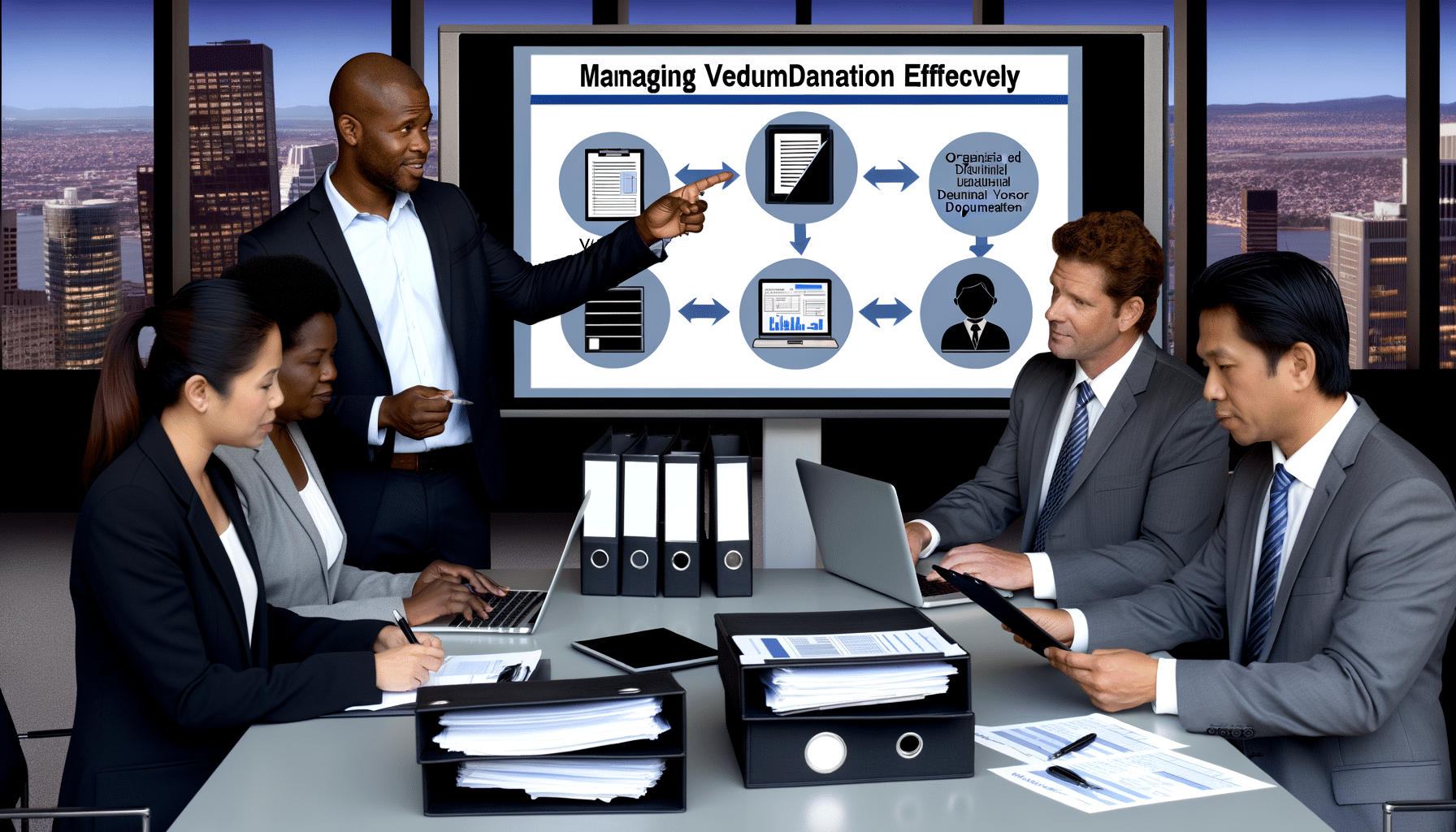Optimizing Vendor Documentation: A Comprehensive Guide
As a founder deeply entrenched in the AI and blockchain space, I constantly encounter businesses struggling with vendor document management. Having walked this path, I understand the challenges of remaining efficient and compliant while maintaining control over a growing stack of vendor documentation. Transitioning from a manual to a more automated, strategic approach can transform this administrative hurdle into a source of competitive advantage.
The Importance of Effective Vendor Documentation Management
Managing vendor documents isn’t just about filing contracts and agreements. It’s about building a repository of vital information that drives procurement decisions and risk management. Here’s why this is essential:
Common Pitfalls in Vendor Document Management
Without a streamlined process, organizations often find themselves entangled in issues like data redundancy, outdated information, and security breaches. Prioritizing a structured approach is crucial to avoiding these pitfalls.
Best Practices for Organizing Vendor Documentation
Over the years, I’ve fine-tuned strategies for managing vendor documents effectively. Let me share these insights:
1. Centralize Your Documentation
Centralizing your document repository is the first and foremost step. By maintaining all vendor documents within a secure, centralized location, you not only improve accessibility but also reduce the risk of losing critical data. RecordsKeeper.AI excels in providing secure data rooms that enable easy access and sharing of sensitive documents with controlled permissions.
2. Automate Document Categorization
With advancements in AI, automating the categorization process has become a game changer. Implementing AI tools to classify and tag records ensures quick retrieval of specific documents, thereby saving valuable time. This automated categorization helps in managing vendor documents efficiently, allowing teams to focus on more strategic tasks.
3. Implement Strong Data Security Measures
Utilizing blockchain-backed solutions, like those offered on RecordsKeeper.AI, enhances data integrity by making vendor records tamper-proof. This level of security builds trust in your procurement processes and safeguards sensitive business information.
4. Regularly Audit and Update Vendor Information
Regular audits are necessary to keep vendor records current and compliant. Updating information periodically not only ensures accuracy but also streamlines documentation when renegotiating terms or renewing contracts.
5. Employ a Robust Backup and Recovery System
Automated backups are invaluable. Ensure that your documentation system supports regular backups with quick recovery options to protect against data loss due to system failures or cyberattacks.
Tracking Vendor Documentation with Precision
Efficient tracking means aligning your document management practices with business objectives. Here, policy management tools are useful. Automating data retention and deletion policies guarantees compliance with legal requirements, while audit logs and reports keep track of all document interactions.
Utilize Compliance Management Solutions
Compliance isn’t negotiable. By leveraging RecordsKeeper.AI’s compliance management capabilities, organizations can automate regulatory workflows and adhere strictly to industry standards. This builds a transparent relationship with stakeholders by demonstrating commitment to lawful operations.
Conclusion: Turn Documentation into a Strategic Asset
The way we handle vendor documents has massive implications. The shift from traditional to modern management strategies can establish a firm foundation for productive vendor relationships and strategic procurement decisions.
Effective vendor document management isn’t just achievable; it’s essential. As you navigate this transformation, I invite you to delve deeper into technology adoption for smoother operations. Follow me for continued insights, as I unearth more strategies and innovations designed to elevate your business efficiency.
In a world where every piece of documentation counts, let’s ensure you wield it to your advantage. Investing time in efficient document management today can open doors to unprecedented productivity and security tomorrow.








